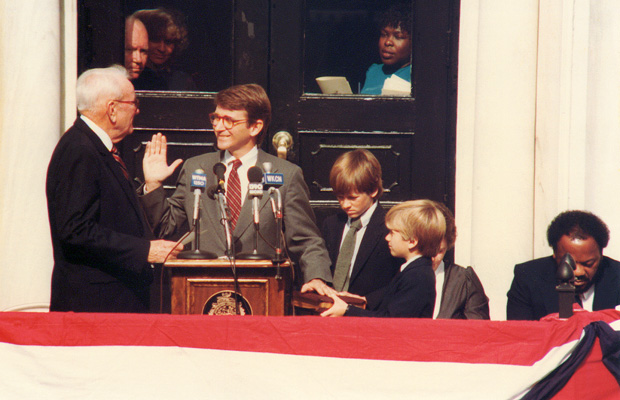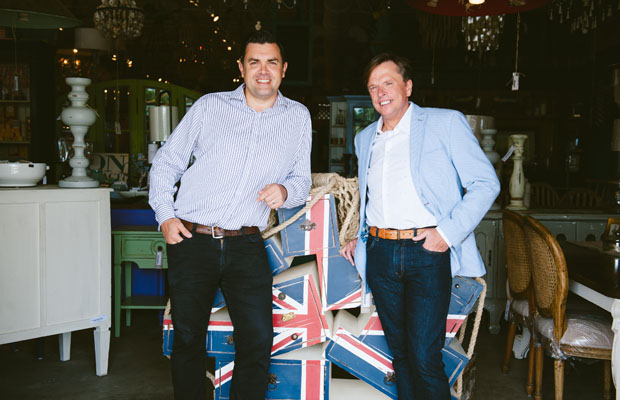Historic Moments in Time
08 May 2015
Ten happenings that shaped Charleston and the Lowcountry
By AMY KEHM O'NEILL

Charleston has been put to the test over the years, and often it's been the unexpected changes that has affected us the most. Now that this list of obstacles and achievements is behind us, the Holy City has grown stronger and possibly better prepared to undertake what lies ahead.
1. The Founding of Charleston-1670
In 1670, the province of Carolina was officially settled a few miles north of the current city, on the banks of the Ashley River by a group of about 120 English settlers. Seven years earlier, King Charles II of England had granted the land to eight friends known as the Lords Proprietors. Records describe the group as having endured a harrowing journey from England with shipwrecks, storms and lost lives.
Leader of the Lords Proprietors, Anthony Ashley Cooper, envisioned for the settlement to become a “great port towne” and in 1680, as more joined the settlement, it was moved to its present peninsula location and renamed “Charles Town” after King Charles II.
2. The Great Fire-1838
Perhaps the structural landscape of the Holy City would have a different flavor, had not much of the city been ravaged by the Great Fire of 1838. It erupted in the evening on April 27 and continued until the next afternoon.
About 1,100 buildings were destroyed, according to the Preservation Society of Charleston, including homes, stores, churches and stables. The devastation spurred the General Assembly to pass legislation to help rebuild Charleston.
We can credit much of Charleston’s Greek Revival style to the fire, because while a few such structures were in place before the fire, rebuilding efforts ushered in much more, according to the National Park Service.
3. Shot Fired Onto Fort Sumter-1861
Whenever the outbreak of the U.S. Civil War is discussed, the beginning will forever trace back to Charleston Harbor and Fort Sumter. It was at 4:30 a.m. on the morning of April 12, 1861, when the Confederate Army opened fire onto the Union fort from Fort Johnson on James Island. An interesting fact is that the first shot did not hit anything, but exploded as a signal for the Confederate Army to begin its effort, according to the National Park Service, and Union forces surrendered after 34 hours.
Each year, thousands of locals and tourists now take boats to visit the iconic site of Fort Sumter.
4. Great Earthquake-1886
Settled along the Atlantic coast, the natural disaster of most concern to the Charleston region is the hurricane, but in the late 1800’s a blow came from deep within the earth. An August 31, 1886 earthquake struck the Lowcountry, killing 60 people and inflicting $5-6 million in damage, according to the U.S. Geological Survey. It was the most damaging earthquake to ever strike the Southeast, and went beyond the city of Charleston where nearly every building sustained some measure of damage. Fifteen miles northwest in Summerville, houses were moved or forced into an incline position.
5. Opening of Grace Bridge-1929
While the current towering Arthur Ravenel Jr. Bridge is now the subject of photographs, paintings and postcards, a bridge that came many years before dramatically changed travel to and from the Holy City. The Grace Memorial Bridge opened in August 1929, and very literally paved the way from Charleston to the small village of Mount Pleasant. Until then, travel was only by ferry or by private boat.
When constructed, the Library of Congress reported that the Grace Memorial Bridge was the fifth longest cantilever bridge in the world, taking 17 months and six million dollars to complete. Demolition of the bridge, and its 1966 counterpart, the Pearman Bridge, began in 2005 after the opening of the Ravenel Bridge.
6. Establishment of the Historic Charleston Foundation-1947
Much of what we treasure about Charleston is thanks to preservation that can be credited to the Historic Charleston Foundation. Established in 1947, the foundation launched revolutionary conservation campaigns. Since inception, the Foundation has purchased, restored or helped to preserve countless structures.
The Foundation implemented the country’s first Revolving Fund with the mission of “buying a property, stabilizing it, selling it to a preservation-minded buyer, then reinvesting the proceeds to purchase another house in the neighborhood.”
It was instrumental in the city’s Historic Preservation Plan of 1974, provided initial funding for the Lowcountry Open Land Trust and remains active in museum programming and archiving, as well as maintaining an online research catalogue.
7. S. H. Kress & Co. Sit In-1960
In 1960, S.H. Kress & Co. stores nationwide became sites for civil rights protests, as an answer to the store’s stance against serving blacks at its lunch counters.
On April 1, 1960, black students from Burke High School staged a sit-in at the store on King Street, and according to the Lowcountry Digital History Initiative, 24 students participated in what became the first “direct action” civil rights protest in Charleston. The young black people refused to leave their seats leading to arrests, convictions and fines. In August 2013, the Preservation Society unveiled a historical marker about the sit-in outside of the K.H. Kress & Co. building.
8. Inauguration of Mayor Joseph P. Riley, Jr.-1975
Now in his 40th year leading the city of Charleston, it may be difficult to remember a time when Joseph P. Riley, Jr. was not at the helm. First elected as mayor in 1975, Riley has been credited with being a visionary, guiding the city from blight and high crime, to southern stardom while serving as a champion of civic pride and hospitality, and also embracing the modern while preserving the historical.
Riley highlights top successes as: decreasing crime, revitalizing business and dramatically increasing Charleston’s size and population.
While Riley, of course, has his critics, no one can dispute that he has shaped the Charleston that we now know and love.
9. Hurricane Hugo-1989
In the wee hours of the morning on September 22, 1989, a Category 4 hurricane named Hugo made landfall directly on the Lowcountry at Sullivan’s Island. Winds reached 135-140 miles per hour and the storm surge reached 20 feet – the highest ever recorded on the east coast, according to the National Weather Service. Hugo toppled trees, ripped apart buildings and killed 13 people in South Carolina.
To this day, when a tropical storm threatens the Lowcountry, memories of Hugo come to mind and emotions again run raw. Since Hugo, advanced warning systems have improved and even greater emphasis has been placed on pre-storm evacuation efforts.
10. Modern Industry: Boeing-2009
While Boeing South Carolina began in North Charleston in 2004, it was in November 2009 that modern progress truly soared into the Lowcountry, and the company began to reshape Charleston industry. It was then that Boeing broke ground on a 1.2 million square foot facility for a new 787 Dreamliner final assembly and delivery line. Boeing rolled out its first Dreamliner from the plant in April 2012.
Boeing’s presence in the Lowcounty not only put locals to work, but attracted others from around the country to the Charleston region.
Since 2009, Boeing South Carolina has expanded numerous times and just last year, it broke ground on a new decorative paint facility scheduled to open in late 2016. In 2014, it also opened the Boeing Research & Technology Center for advanced manufacturing, and Propulsion South Carolina for the design and assembly of the 737 MAX engine nacelle inlet.












